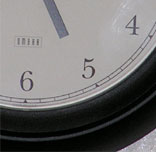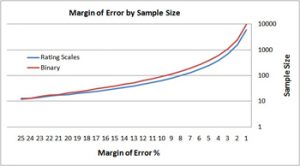Topics
Topics

Should You Use 5 Or 7 Point Scales?
If you’ve ever designed a survey or questionnaire you’ve probably wondered how many points the response options should have. Most questionnaires I’ve examined either use five point scales or seven-point scales. Is one better? 7-point scales are slightly better The short answer is that 7-point scales are a little better than 5-points—but not by much.

Usability Evaluators: Reliable as Radiologists?
Does this man need back surgery? Does this woman have breast cancer? Does this website have usability problems? Chances are you’re not qualified to answer the first two questions but probably able to provide some answers about the third. This image comes from the Hotel Pennsylvania website. It was the subject of

7 Living Legends Of Usability
Love them, hate them, admire them or ignore them. These seven living legends aren’t one-hit wonders. Their work has had and will continue to have a large impact on the field of usability for some time. Here they are in alphabetical order: 1. Joe Dumas “Dr Usability” is author of dozens of articles on

Memory Versus Math In Usability Tests
I write a lot about the importance of confidence intervals and making the most of small sample sizes. Recently, Dean Barker, director of UX at Sage CRM read one of the articles on margins of error and sample sizes and said: “I understand there is variability with small samples but I’m having a hard time

Books Faster than Tablets…Or Not?
Recently Nielsen conducted a study on the reading speeds between the printed book, Kindle and iPad. From 24 users the study concluded that the iPad took about 6.2% longer (p =.06) and Kindle about 10% longer (p <.01) to read than the same story on a printed book. From this data Nielsen concluded “Books Faster

A Brief History Of The Magic Number 5 In Usability Testing
Wondering about the origins of the sample size controversy in the usability profession? Here is an annotated timeline of the major events and papers which continue to shape this topic. The Pre-Cambrian Era (Up to 1982) It’s the dawn of Usability Evaluation and the first indications of diminishing returns in problem discovery are emerging. 1981:

What is a Representative Sample Size for a Survey?
Will users purchase an upgrade? What features are most desired? Will they recommend the product to a friend? Part of measuring the user experience involves directly asking users what they think via surveys. The Web has made surveys easy to administer and deliver. It hasn’t made the question of how many people you need to

The Five Most Influential Papers In Usability
I compiled a list of papers that have had a large and lasting influence on the field of Usability and User Experience. I then asked Jim Lewis and Joe Dumas, two pioneers in this field for their top five. There was considerable overlap in both the papers and topics suggesting that while there may be

Want To Improve Usability? Count Calories
When babies are born in the hospital nurses measure every feeding and diaper change. When you want to lose weight with Weight Watchers you log everything you eat using a point system. When you want to improve usability beyond obvious problems you need to record: symptoms: lower completion rates, lower satisfaction ratings, longer task times

Five Ways To Make Any Usability Test More Credible
Whether you’re conducting an early stage test of a prototype or late validation, these five tips can make any usability test more credible. The tips both temper skepticism about small samples and help you avoid overstating your findings. Count the number of users that experience each problem. Early testing is all about finding and fixing

What Five Users Can Tell You That 5000 Cannot
With usability testing it used to be that we had to make our best guess as how users actually interacted with software outside a contrived lab-setting. We didn’t have all the information we needed. Knowing what users did was in a sense a puzzle with a lot of missing pieces. Web-analytics provides us with a

Is Usability A Science?
Is manufacturing a science? Is marketing a science? Is engineering a science? None of these are sciences. But they all can be informed by science or ignore science. To be “scientific” is to rely on observation and measurement instead of intuition and superstition. Controlled experiments, surveys, observational studies, testing and validation can be used in